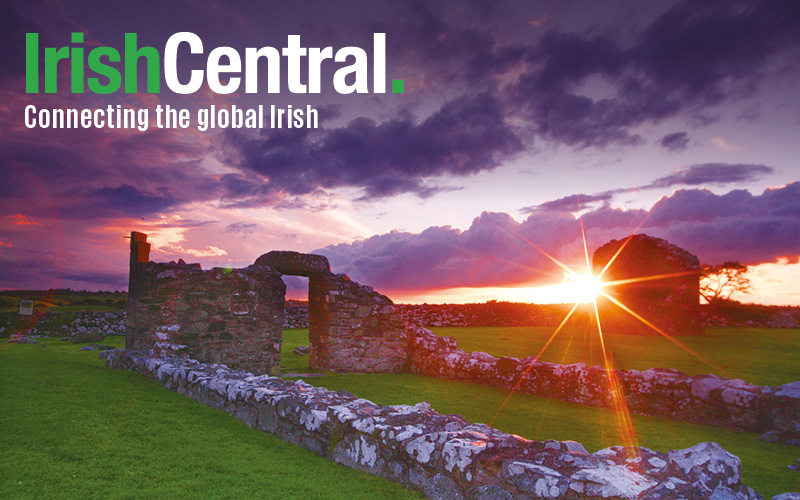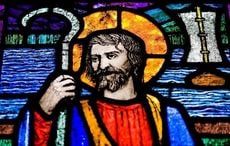The July 12th Orange Order parades have been a point of intense friction in Northern Ireland for many years as Protestants and Catholics clashed over the annual celebration of Protestant King William of Orange’s defeat over the Catholic King James II at the Battle of the Boyne in 1690.
Violence also came to a head on several occasions in New York, however, as the Orange Order marched through Irish Catholic areas in the city, causing anger among the neighborhood’s immigrant residents. The Orange Riots in 1870 and 1871 saw an outbreak of Irish political tension on the streets of New York and resulted in dozens of deaths and hundreds of injuries.
Anti-Irish sentiment was high in New York at the time. The Irish were portrayed as drunken fighters by cartoonist Thomas Nast among others, a stereotype heightened after the violence of the Draft Riots in 1863. Taking their cue from nativist Americanss, the Protestant Irish in New York argued that the Catholics were loyal to the Pope and could not be true citizens nor could they ever become fully-fledged Americans.
The tension between the two Irish groups came to a head on July 12, 1870 when violence erupted at the annual Orange Order parade, resulting in the deaths of eight people. Marching up eighth avenue from 29th St to their headquarters near Elm Park at 92nd St, where a Boyne picnic was to be held, some 2,000 Orangemen were joined by members of the American Protective Association (APA), a nativist group best known for its hostility towards Catholics in general, and Irish immigrants in particular.
The parade marched through Hell’s Kitchen, at the time a well-known area for Irish Catholics. Accounts differ as to which group was the first to raise a fist. Some say that the Protestant Irish were taunting Catholics by singing tunes such as “Protestant Boys” and “Croppies, Lie Down,” while others say the Catholics launched a completely unprovoked attack on an otherwise peaceful parade.
Whoever began the scuffle, the riot quickly spread and is believed to have covered 30 blocks at one stage.
“Fighting spilled onto nearby streets, then eastward to Central Park, then down to Eighty-Second Street, and finally onto Eighth and Ninth Avenue streetcars as Orangemen and APA members tried to hurry their families to safety,” writes Michael A. Gordon in “The Orange Riots: Irish Political Violence in New York City, 1870 and 1871.”
A heavy downpour eventually damped down the anger on the streets, but the stage had been set for greater violence the following year.
As the 1871 parade day approached, the Orange Order requested permission to march again, but the request was initially denied by the city's police commissioner, James J. Kelso, with the support of Boss William M. Tweed, the head of Tammany Hall, the Democratic Party political machine which controlled the city and the state. It is believed Kelso was also pressured to ban the parade by New York Mayor A. Oakley Hall, on advice he was given by New York’s Ancient Order of Hibernians and the Knights of St. Patrick.
This initial decision was overturned, however, by Governor John T. Hoffman, who promised that the National Guard would be on hand to protect against any outbreaks of violence should events show signs of going the same way they had in 1870. The decision to hold the parade was supported by much of the mainstream media, which claimed that calling off the parade would be to caving in to the “Irish mob” and give the ever-expanding population of Irish Catholics in the city even more power.
The marchers again met at Lamartine Hall on 8th Ave, but this time they traveled south in order to avoid Hell’s Kitchen. Protected by 1,500 policemen and five regiments of the National Guard, the Orange Order set off making their way through the angry crowd mostly made up of Irish Catholic laborers.
Despite the extra police and National Guard, the tension broke into violence as soon as the parade got under way. The violence rapidly developed and was dramatically greater than it had been the previous year.
As rocks and bottles were thrown at the marchers from the crowd, the Guard began to shoot indiscriminately at the people lining the parade route. They also charged at the crowd to clear a path for the parade to continue, using clubs and bayonets to move the people.
The parade made it to 23rd Street, turned onto Fifth Avenue where there was more support for the Orangemen. It continued to Cooper Union, where it again met a hostile crowd, who were again charged by the National Guard.
Read more: Catholic Irish soldiers too drunk to fight at Battle of the Boyne
More than 60 people, mostly Irish immigrants, were killed and over 100 civilians, 22 policemen, and one Orangeman were injured in what quickly became known as the "Slaughter on Eighth Avenue." Some 20,000 turned out the following day to join the funeral processions making their way to Calvary Cemetery in Queens.
“A scene of mad confusion ensued, during which the soldiers of the escort, deploying around the paraders whom they were protecting, lifted their rifles and poured a volley into the crowds,” wrote a 1921 New York Times article.
“On the instant Eighth Avenue was strewn with dead and dying and wounded persons, while hundreds of others dashed into door ways or down side streets in an attempt to escape the bullets flying in all directions.”
This was the last time that the Orange Order would march in such a manner in New York and was also the last major outbreak of violence against Irish Catholics. Many Orangemen continued to join organizations like the American Protective Association that espoused nativist ideals, however.
The blame fell at the door of Tammany Hall with an issue of Harper’s Bazaar claiming that the political movement had failed to restrain their Irish Catholic supporters and dubbed it “The Tammany Riot.”
Orange Order parades take place throughout Northern Ireland annually on July 12, although the number has drastically dropped due to the violence that ensued from such parades during the Troubles. This year, just 18 demonstrations will take place marking the 326th anniversary of King William III's victory.
Since 1998 the Parades Commission has acted as a regulator of the parades. The commission deals with disputes arising over parades. Although the threat of violence has receded in recent years, thousands of PSNI officers will be deployed at parades today.
Although mainly based in Northern Ireland, the Orange Order can also be found in Scotland, England, the United States of America, west Africa, Canada, Australia and New Zealand. Founded in September 1795, the Orange Order has a strong tradition of parades, holding its first Boyne Commemoration Parade in 1796.




Comments